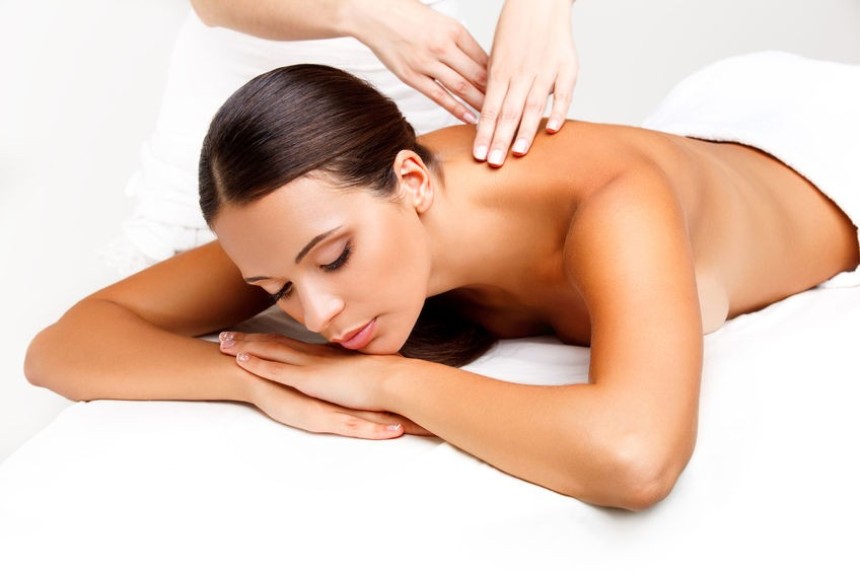
Sports Massage; What Every Athlete Should Know
Welcome to the world of sports massage, where recovery meets performance enhancement! Whether you're a seasoned athlete or just starting your fitness journey,
Imagine having a secret weapon that not only accelerates your recovery but also boosts your flexibility and reduces injury risk. In this comprehensive guide, "Sports Massage 101: What Every Athlete Should Know," we'll unravel the mysteries behind this powerful therapy, explore its transformative effects on both body and mind, and equip you with essential tips to incorporate it into your routine. Get ready to unlock new levels of athletic potential—your muscles will thank you!
Introduction to Sports Massage
Athletes push their bodies to the limit, striving for peak performance and constant improvement. However, with every sprint, lift, or game comes the risk of strain and injury. While standard massages can feel wonderful after a tough workout, sports massage massage takes recovery to another level. It’s not just about relaxation; it’s about enhancing athletic performance and preventing injuries.
Whether you’re a seasoned professional or an enthusiastic weekend warrior, understanding the ins and outs of sports massage is crucial. This guide will empower you with knowledge on its benefits, techniques used by professionals, and how to incorporate this valuable tool into your fitness routine effectively. Get ready to unlock new levels in your training regimen!
Benefits of Sports Massage for Athletes
Sports massage offers a wealth of benefits tailored specifically for athletes. One key advantage is enhanced recovery. By increasing blood flow, muscles receive vital oxygen and nutrients needed to repair after intense workouts.
Additionally, sports massage can help reduce muscle tension and soreness. This relief allows athletes to maintain peak performance levels without the nagging discomfort that often accompanies rigorous training.
Flexibility is another significant benefit. Regular sessions can improve range of motion, making it easier for athletes to execute movements efficiently during competition.
Moreover, sports massage aids in injury prevention by identifying tight spots or imbalances before they escalate into serious issues. It’s also known for its positive impact on mental well-being, promoting relaxation and focus essential for high-stakes performances.
Incorporating sports massage into an athlete's routine fosters both physical health and mental clarity—two ingredients crucial for success in any sport.
Techniques Used in Sports Massage
- Sports massage encompasses various techniques tailored to meet athletes' needs. One popular method is deep tissue massage, focusing on realigning deeper layers of muscle and connective tissue. This technique helps relieve chronic tension that may result from intense training or injury.
- Another effective approach is trigger point therapy, which targets specific tight areas within muscles. By applying pressure to these points, therapists can alleviate pain and enhance mobility.
- Swedish massage also plays a role in sports recovery. Its long strokes promote relaxation while improving circulation—perfect for enhancing overall performance.
- Lastly, myofascial release works on the fascia surrounding muscles, helping reduce restrictions and improve flexibility. Each technique serves a unique purpose but combines to support athletic performance and recovery effectively.
How Often Should Athletes Get a Sports Massage?
The frequency of sports massage can vary based on an athlete's specific needs and training intensity. For those in heavy training or competition, weekly sessions may be beneficial. This regularity helps prevent injuries and enhances performance.
If you’re a recreational athlete, bi-weekly massages could suffice. These sessions help maintain muscle flexibility and promote recovery without overwhelming your body.
Listening to your body is essential. If you're feeling particularly sore or fatigued after intense workouts, consider scheduling additional massages during peak times.
Tips for Finding a Qualified Sports Massage Therapist
- Finding a qualified sports massage therapist can be crucial for your recovery and performance. Start by seeking recommendations from fellow athletes or coaches who have experience with therapists in your area.
- Check credentials to ensure they are certified and have specialized training in sports massage. Look for affiliations with recognized professional organizations, as this often reflects commitment to ongoing education.
- Don’t hesitate to ask about their experience working with athletes of your level. Some may specialize in certain sports or injuries, which can enhance the effectiveness of your sessions.
- Schedule an initial consultation to discuss your specific needs and expectations. Pay attention to their communication style; a good therapist should listen well and address any concerns you might have.
- Finally, trust your instincts during that first meeting. Comfort and rapport are essential for building a successful therapeutic relationship over time.
Pre and Post-Event Sports Massage: When to Schedule
Timing is crucial when it comes to sports massage. For pre-event massages, aim for a session about 30 minutes to two hours before your competition. This helps warm up the muscles and improves circulation. It can enhance flexibility and prepare your body mentally as well.
Post-event massages serve a different purpose. Schedule this within an hour after your event for optimal recovery benefits. During this time, the body is in need of relief from muscle tightness and soreness accumulated during performance.
Both types of massages are tailored to meet specific needs. Communicating with your therapist about what you’ve experienced during the event will help them focus on critical areas that require attention.
Integrating these sessions into your routine can make a noticeable difference in how quickly you bounce back or prep for action again. Understanding when to schedule these massages ensures you maximize their effectiveness right when it matters most.
Common Injuries Treated with Sports Massage
Sports massage is effective for a variety of common injuries that athletes often face. Muscle strains are at the top of the list. These occur when muscles are overstretched or torn during intense activity. Targeted massage can aid in healing and improving flexibility.
Tendonitis, particularly in areas like the knees and shoulders, can also benefit from this therapy. Sports massage helps alleviate pain and promotes blood flow to facilitate recovery.
Another injury frequently treated is plantar fasciitis, which causes heel pain due to inflammation of the tissue connecting your heel bone to your toes. Gentle manipulation can ease tension in the feet. Sprains are another issue athletes contend with; they occur when ligaments stretch too far or tear. Massage techniques help reduce swelling and improve mobility in these cases, allowing athletes to return faster.
By addressing these injuries through sports massage, many find improved performance along with accelerated recovery times.
DIY Techniques for At-Home Sports Massage
At-home sports massage can be a game changer for athletes. You don’t always need a professional to reap the benefits. Simple techniques can enhance recovery and relieve tightness.
Start with foam rolling. This tool is excellent for targeting muscle knots and fascia. Roll slowly over sore areas, spending extra time on tender spots. It’s effective in increasing blood flow and flexibility. Use your hands for self-massage as well. Apply pressure with fingertips or palms to areas like calves, thighs, and shoulders. Incorporate circular motions or long strokes to ease tension.
Another great technique is stretching followed by gentle compression using a tennis ball against a wall or floor. Focus on trouble zones like the lower back or glutes; this helps release built-up stress.
Lastly, remember hydration plays an essential role in recovery too! Drink plenty of water before and after your DIY sessions for optimal results.
Conclusion: Incorporating Regular Sports Massage into Your Training Regimen
Incorporating regular sports massage into your training regimen can be a game changer for athletes at all levels. It’s not just about recovery; it enhances performance and prevents injuries. Whether you’re an amateur or a seasoned pro, making time for this therapy is essential.
Consider scheduling sessions around your training cycles to maximize benefits. This proactive approach allows you to address potential issues before they escalate. Moreover, integrating self-care routines with DIY techniques can further enhance the effects of professional massages.
Ultimately, prioritizing sports massage as part of your routine could lead to improved mobility, reduced muscle tension, and quicker recovery times. As you fine-tune your training program, don’t overlook the value that sports massage brings—it may well be the key to unlocking your full athletic potential.



